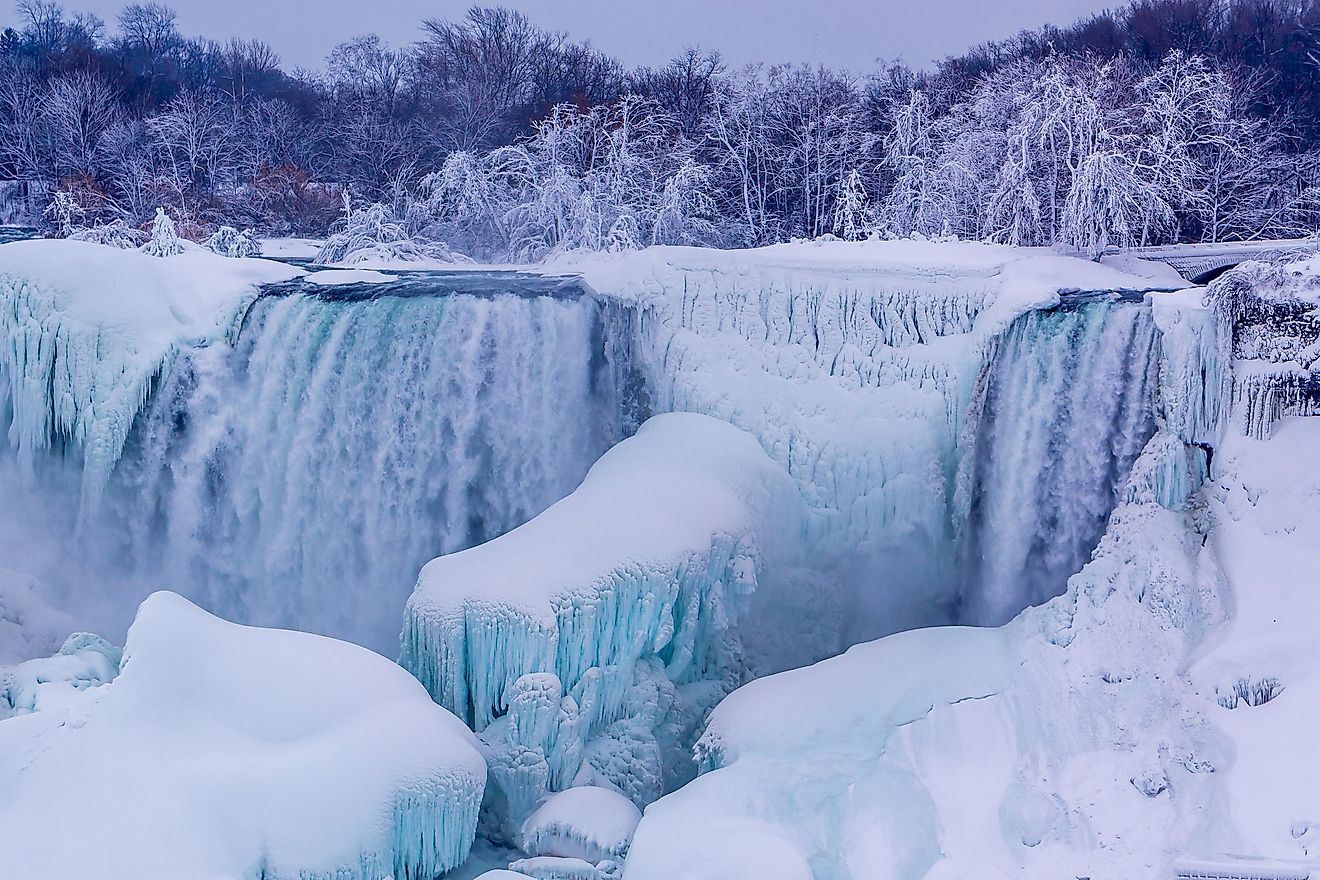Does Niagara Falls Freeze? Has Niagara Falls Frozen?

The Niagara Falls refer to three waterfalls that form the Niagara Gorge’s southern side. Located on the border between Canada and the United States, these three falls are the American Falls, the Bridal Veil Falls, and the Horseshoe Falls. Of the three waterfalls, the one that lies on the border between the two countries is the Horseshoe Falls while the other two are entirely within the US. The falls, which are situated along the Niagara River, has a vertical drop of at least 16 feet and a flow rate that is higher than any other waterfall in North America. Due to the heavy flow rate, it is nearly impossible for the falls to completely freeze over.
Can Niagara Falls Freeze?
Over the years, Niagara Falls has experienced freezing in some seasons. However, most of the times, the falls only freeze partially. The only time that there was total freezing of both the falls and river was back on March 29, 1848. On that day, there was an ice jam on the river that made it possible for complete freezing. Aside from that, the falls have partially frozen a few times in the 1900s (such as 1906 and 1911) as well as the 2000s such as 2014, 2017, and most recently in 2019. Aside from 1848, the only other time it came close to complete freezing was back in 1912 when the American Falls froze. However, some water trickled from the falls while the other two were running normally.
1848 Freeze
As stated earlier, the falls have only frozen completely once in the past. The freezing back then was made possible by a special condition, that is, the accumulation of ice on Lake Erie. The resulting ice formed a dam that stopped the flow of water completely to the falls. By blocking outflow from Lake Erie, the Niagara River, which feeds water to the falls, was also effectively cut off from water flow. From this perspective, an argument can be successfully made that Niagara Falls has never completely dried up because of total freezing.
Partial Freezing
The other times, the falls only experienced partial freezing. The ice forms a certain feature that has come to be known as an “ice bridge.” Essentially, an ice bridge is formed when ice freezes the top part of the river while the lower parts of the river channel maintain the flow of water. In the past, people were allowed to walk on top of the ice however this was stopped in 1912 after the bridge broke apart and led to the deaths of three tourists.
Most of the time, the partial freeze happens in January when the temperatures are anywhere between 16 and 32 degrees Celsius. However, the authorities in charge installed steel ice-cutters to prevent total freezing since people depend on the falls for water and the production of hydroelectricity.
Freezing in 2019
In January 2019, parts of the falls experienced partial freezing after the temperatures dropped to about -17°C. The low temperatures were brought about by a winter storm in the northeastern region of North America.











